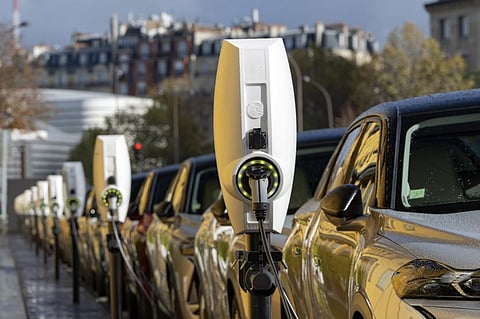Why hydrogen vs battery debate doesn’t need a winner: The technology choice conundrum
This is the second of a two-part series on battery-operated and hydrogen powered electric vehicles. Read the first part here
The world has grown comfortable with the ecosystem of internal combustion engines. Stakeholders are wary of pushing a new technology within strict and tight deadlines, given the kind of investment it takes for adopting.
While necessary, the shift requires the vehicle industry and governments to place bets on new mobility solutions to improve consumer’s experience while reducing emissions. Adoption has, thus, been slow and careful.
Battery electric vehicles (BEV) and fuel-cell electric vehicles (FCEV) come with their own set of pros and cons. The comparison boils down to their energy chain (well-to-wheel) efficiency and the energy densities of the two storage systems.
Comparison of BEV & FCEV technologies
Source: Expert interviews, CSE analysis
The term ‘well-to-wheel’ is used for life cycle assessments of fuels, including all phases from extraction of raw materials to their use in the vehicle.
There are two components to the well-to-wheel assessment: Well-to-tank and tank-to-wheel. Well-to-tank includes fuel / electricity generation and transport / transmission, and tank-to-wheel is about the use of the fuel.
FCEVs are way less energy efficient than BEVs, when only the life-cycle of the fuel (battery and hydrogen) is considered. For battery electric, there are losses during electricity transmission as well as heat generation, making the entire energy chain 80-90 per cent efficient.
For fuel-cells, electrolysis alone loses 30 per cent of the energy. Further losses occur during compressing the hydrogen, cooling and transporting it, and a significant loss when the hydrogen goes from the hydrogen tank to the fuel-cell to the wheel due to leakages and other reasons.
Adding all that leaves us with 25-35 per cent energy efficiency. These losses are bound to happen even with the tightest benchmarks, given the chemistry of hydrogen molecules.
Source: CSE Analysis
On the other hand, the battery-efficacy difference between battery and fuel-cell electric vehicles, in terms of the vehicle weight versus the driving range, indicates that when it comes to carrying more weight and travelling farther, fuel-cells are more efficient.
Batteries are heavy and expensive and they take longer to charge than refuelling the vehicle. The battery with a 250 kilometre range in India (Tata Tiago electric vehicle) can weigh upto 100-130 kgs with a charging time of upto 4-5 hours from 0-100 per cent. A 450 km range battery (MG ZS EV) can weigh upto 250 kgs.
On the contrary, the weight of FCEVs changes negligibly with range. A vehicle that can run for 250 kms will weigh about the same as a vehicle with a 450 km driving range.
Source: Department of Energy, USA
Different technologies, different use cases
So, which of the two wins the debate of a better technology? By all accounts, they are both going to be winners, because they both will be needed, based on different use cases.
Hydrogen is good for going longer distances. Currently, the FCEV technology is nascent, expensive and scarce.
In 2021, there were only 730 hydrogen refuelling stations in the world, according to to the International Energy Agency.
But the high energy density of hydrogen and the low vehicle payload requirements for hydrogen vehicles make them an excellent candidate to fuel long distance cargo vehicles such as trucks, trains and even aircrafts.
Battery technology has advanced in the last decade and continues to improve on the cost and energy density fronts. By 2026, the battery prices will reach the $100 / kWh mark, Bloomberg estimated. This is the price at which EVs will reach price parity with internal combustion engines on the upfront cost basis.
With time and innovation, the energy density will increase, reducing the weight of batteries to run longer distances. But the recharging will remain time-consuming.
Therefore, in the short to medium term, battery vehicles are more suited for regional travel, especially in the cargo sector.
Additionally, augmentation of the hydrogen refuelling network will help take the pressure off electricity grids in cities. In some places, it will make more sense to upgrade the grid, inviting more BEVs, while in others it will make a lot more sense to install a hydrogen station.
An energy diversification model where both battery and hydrogen infrastructures co-exist will also mean better energy security and a more stable grid.
The extent of diversification will depend on market growth, consumer choice and behaviour, the grid capacity as well as the respective development in technologies for both BEVs and FCEVs to make economic sense.

